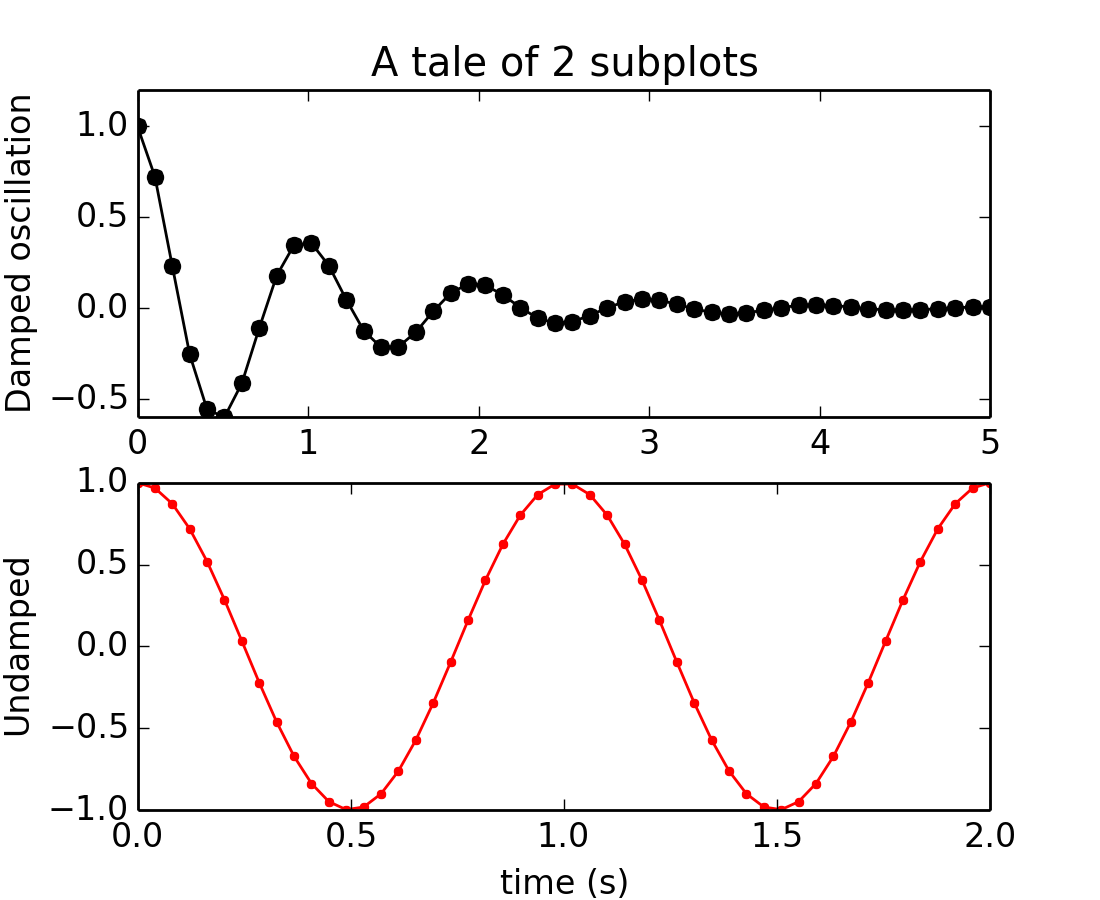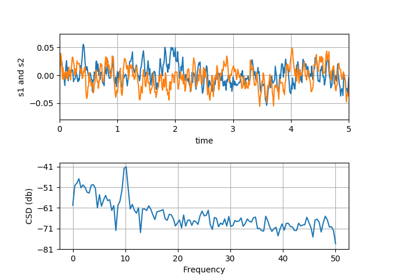

- #Matplotlib subplot example how to
- #Matplotlib subplot example Patch
- #Matplotlib subplot example code
#Matplotlib subplot example how to
Option 2: How to create subplots from a single dataframe with multiple separate datasets Plt.legend(handles=patches, bbox_to_anchor=(1.06, 1.2), loc='center left', borderaxespad=0) # place legend outside of plot change the right bbox value to move the legend up or down For example for 4 subplots (2x2): import matplotlib.pyplot as plt fig, axes plt.subplots (nrows2, ncols2) df1.plot (axaxes 0,0) df2.plot (axaxes 0,1). P.legend_.remove() # remove the individual plot legends You can manually create the subplots with matplotlib, and then plot the dataframes on a specific subplot using the ax keyword.

The two integer arguments to this function specify the number of rows and columns of the subplot grid. P = sns.scatterplot(data=v, x='x', y='y', hue='cat', palette=cmap) Matplotlib’spyplot API has a convenience function called subplots () which acts as a utility wrapper and helps in creating common layouts of subplots, including the enclosing figure object, in a single call. Plt.subplot(row_nums, col_nums, i) # create subplots Plt.figure(figsize=(10, 5)) # change the figure size as neededįor i, (k, v) in enumerate(df_ems(), 1):

Row_nums = math.ceil(len(df_dict) / col_nums) # how many rows of plots Import math import ceil # determine correct number of subplotĭata = # get unique catsĬolors = sns.color_palette('husl', n_colors=len(unique_cat)) # get a number of colorsĬmap = dict(zip(unique_cat, colors)) # zip values to colors
#Matplotlib subplot example Patch
Import numpy as np # used for random dataįrom matplotlib.patches import Patch # for custom legend Imports and synthetic data import pandas as pd Since the colors will be the same, place one legend to the side of the plots, instead of a legend in every plot.A custom color map needs to be created from the unique 'cat' values for all the dataframes.Because dataframes are being iterated through, there's no guarantee that colors will be mapped the same for each plot.The categories, cat, may be overlapping, but all dataframes don't necessarily contain all values of cat.Created by separating a single dataframe into multiple dataframes.There is a dictionary of multiple dataframes of tidy data that are either:.Option 1: How to create subplots from a dictionary of dataframes with long (tidy) data Also, you need to make list of data frames df_list which you wanted to plot. You need to define the number of rows nrow and the number of columns ncol.
#Matplotlib subplot example code
Using this code you can plot subplots in any configuration. #define number of rows and columns for subplots Then using the for loop for plotting subplots. You can plot multiple subplots of multiple pandas data frames using matplotlib with a simple trick of making a list of all data frame.


 0 kommentar(er)
0 kommentar(er)
